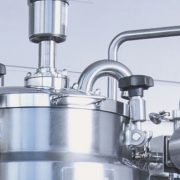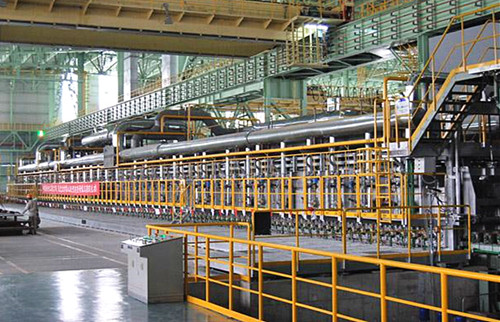Why the stainless steel pipe need solution annealing?
Solution annealing is also referred as carbide solution annealing, is a process that heats the work part to 1010℃ or above to remove of carbide precipitation (Carbon from the stainless steel solid solution), and then it is rapid cooling, usually, water quenching and the carbide returned to the stainless steel solid solution. Solution annealing treatment can be applied to alloy steel and stainless steel. For 304 stainless steel castings, solution treatment can produce uniform microstructure without carbide impurities. Generally, the stainless steel tube is heated to about 950 ~ 1150℃ for a long time to make the carbide and various alloying elements fully and evenly dissolved in Austenite, and then quickly quenched water cooling to obtain pure Austenite structure due to carbon and other alloying elements to late precipitation. There comes with the question, why the stainless steel pipe needs solution annealing? Firstly you should know the function of the solution annealing process.
Uniform metallographic structure
This is especially important for raw materials. Inconsistencies in rolling temperature and cooling rate of hot rolled steel tubes cause the same consequences in the structure. When atomic activity increases at high temperatures, σ dissolves and chemical composition tend to be uniform, then a uniform single-phase structure is obtained after rapid cooling.
Elimination of work hardening
The solid solution treatment restores the twisted lattice and recrystallizes the broken grain. The internal stress and tensile strength of the steel tube reduce while the elongation rate increases to facilitate the continuous cold working.
Increased corrosion resistance
The corrosion resistance of stainless steel decreases with the precipitation of carbide, and the corrosion resistance of steel tube returns to the best after solid solution treatment. Temperature, holding time and cooling rate are the most important factors in solution treatment for stainless steel.
The solid solution temperature depends on the chemical composition. Generally speaking, the solid solution temperature should be correspondingly increased for the grade with more alloy elements and high content, especially for the steel with a high content of manganese, molybdenum, nickel and silicon. Only by raising the solid solution temperature and making it fully dissolved can the softening effect be achieved.
However, there are some exceptions, such as 316Ti. When the solid solution temperature is high, the carbide of the stabilized elements is fully dissolved in the Austenite, which will precipitate out at the grain boundary in the form of Cr23C6 and cause intergranular corrosion in the subsequent cooling. The lower solid solution temperature is recommended to prevent carbide (TiC and Nbc) of stabilizing elements from decomposition and solid solution.



